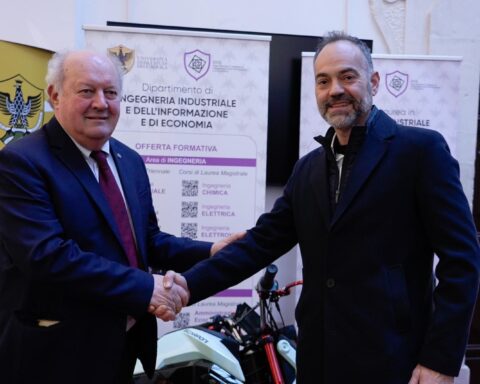Last Updated on April 5, 2024 11:41 am by Laszlo Szabo / NowadAIs | Published on April 5, 2024 by Juhasz “the Mage” Gabor
U.S. Navy procures first-of-its-kind 100% solar-electric, Group 2 UAS from Kraus Hamdani Aerospace; the K1000ULE VTOL UAS
EMERYVILLE, Calif., April 4, 2024 — The U.S. Navy PMA 263 has selected Kraus Hamdani Aerospace to provide the K1000ULE solar-electric VTOL UAS. It will be fielded by the United States Marine Corps Small Unit Remote Scouting System.
The Navy ultimately selected the K1000ULE through a comprehensive down selection evaluation process.
Conducted at a government test facility and overseen by the University of Maryland UAS Research and Operations Center, the following capabilities were evaluated:
- Enhanced maneuverability, enabling operations from disadvantaged locations
- Reduced transportation and logistics enabling rapid transportation into theater
- Minimized crew requirements with a maximum of two operators (pilot and sensor operator)
- Silent operations to minimize detection
- Airborne endurance (extended flight time). The K1000ULE remains a world leader in long-endurance aerial operations
- VTOL capabilities, ensuring independence from traditional runways
- Durability, with the ability to operate in various environmental conditions
- Day and night operations and sensor capabilities
- Intelligence, Surveillance and Reconnaissance with Target Acquisition capabilities
- Compliance with the SOCOM Modular Payload (MOD Payload) standard
- Command and Control (C2) range between operator and aircraft
- Mission systems include simplified Command and Control of the K1000ULE, Full-Motion Video (FMV) interfaces, and Target Acquisition capabilities
Once in the hands of the U.S. Marine Corps., the attributes above will enhance the Navy’s capacity to perform Intelligence, Surveillance, and Reconnaissance operations simpler, faster, and more cost-effective with the ultimate objective of saving lives. Additionally, the Navy will get enhanced long-range communication capabilities enabling continued coverage in denied and contested environments.
World-leading hardware. Game-changing software.
The K1000ULE, while providing the longest endurance in the electric Group-2 VTOL category, is enabled to share critical data between platforms within its network. This allows for the repositioning of aircraft on-demand based on sensor input while dynamically populating the Common Operating Picture.
A single operator can control a swarm of K1000ULE UAS through a simple user interface, identifying specific coverage areas and launching the correct number of aircraft to fulfill dynamic missions. The pilot has full situational awareness and can dynamically re-task aircraft in real-time as mission objectives change using gamified user interfaces.
About Kraus Hamdani Aerospace
Kraus Hamdani Aerospace is the world leader in building Ultra-Long Endurance (ULE) Unmanned Aerial Systems (UAS) that mimic nature by utilizing onboard artificial intelligence to silently glide through the air like a bird and generate clean onboard energy. The K1000ULE is the world’s longest endurance fully electric zero emissions autonomous unmanned aircraft in its size and weight category.
The K1000ULE comprises aerial-based data, ISR, and communication services enabled by multi-drone coordination systems (coordinated swarming). This addresses critical customer needs within various sectors, such as emergency and disaster relief, data and telecommunications, defense, agriculture, oil and gas, climate change, and wildlife preservation.
SOURCE Kraus Hamdani Aerospace











